DET
50+ DET Interview Questions and Answers

Asked in Suzuki

Q. 1.Difference bw petrol and diesel engine. 2.Law of thermodynamics 3.Types of fluid 4.About my hobbies 5.Dc motor working .
The interview covered topics such as differences between petrol and diesel engines, laws of thermodynamics, types of fluids, and DC motor working.
Petrol engines use spark plugs to ignite fuel, while diesel engines use compression to ignite fuel
The first law of thermodynamics states that energy cannot be created or destroyed, only transferred or converted
Fluids can be classified as liquids, gases, or plasmas
My hobbies include reading, hiking, and playing guitar
DC motors conver...read more

Asked in Delphi TVS

Q. What will be major cost savings in previous organisation
Major cost savings were achieved through process optimization and automation.
Implemented automation of manual processes resulting in reduced labor costs
Optimized supply chain management resulting in reduced inventory costs
Negotiated better vendor contracts resulting in reduced procurement costs
DET Interview Questions and Answers for Freshers
Asked in mm auto industries

Q. What is IC engine What is 2 stroke 4 stroke engine Deference between 2 stroke and 4 stroke like this and other subjects related
IC engine is an internal combustion engine that generates power by burning fuel inside the engine. 2 stroke engine completes a power cycle in 2 strokes of the piston, while 4 stroke engine completes it in 4 strokes.
IC engine is an internal combustion engine that generates power by burning fuel inside the engine.
2 stroke engine completes a power cycle in 2 strokes of the piston, while 4 stroke engine completes it in 4 strokes.
In a 2 stroke engine, the intake, compression, powe...read more

Asked in Keihin India Manufacturing

Q. How long will it take to process the payment?
The time required to employ the parment depends on various factors such as the recruitment process, availability of candidates, and the complexity of the position.
The duration can vary greatly depending on the organization's hiring process and the specific requirements of the role.
Factors such as the number of interviews, background checks, and reference checks can impact the timeline.
If the position requires specialized skills or qualifications, it may take longer to find a ...read more
Asked in Eastern Synpacks

Q. Which software do you use, and what is your role in your current company?
We use a variety of software depending on the department and task at hand.
For project management, we use Asana and Trello
For design, we use Adobe Creative Suite
For development, we use Visual Studio and GitHub
For accounting, we use QuickBooks
For communication, we use Slack and Zoom

Asked in Hospet Steels

Q. WHAT IS STRESS AND STRAIN. PHYSICAL UNITS, STANDARDS
Stress is the force applied to a material, while strain is the resulting deformation. They are measured in units of force per unit area and are important in engineering and materials science.
Stress is the force applied to a material per unit area
Strain is the resulting deformation or change in shape of the material
Stress is typically measured in units like Pascals (Pa) or pounds per square inch (psi)
Strain is a dimensionless quantity, often expressed as a percentage
Standards ...read more

Asked in Tata Motors

Q. What are the differences between a petrol engine and a diesel engine?
Petrol engines ignite fuel with a spark, while diesel engines use compression for ignition, leading to efficiency and performance differences.
Ignition Method: Petrol engines use spark plugs; diesel engines rely on compression ignition.
Fuel Efficiency: Diesel engines are generally more fuel-efficient than petrol engines.
Power Output: Diesel engines produce more torque, making them suitable for heavy-duty applications like trucks.
Emissions: Petrol engines typically emit more CO...read more

Asked in Jaya Hind Industries

Q. What is an air compressor and how does it function?
An air compressor is a device that converts power into potential energy stored in pressurized air.
Air compressors work by drawing in air and compressing it to increase pressure.
They are commonly used in various applications, such as powering pneumatic tools.
Examples include portable air compressors for inflating tires and industrial compressors for manufacturing.
Compressors can be categorized into positive displacement and dynamic types.
Share interview questions and help millions of jobseekers 🌟


Asked in Perfect Polymers

Q. What is the least count of the Vernier caliper?
The least count of a Bernier caliper is typically 0.02 mm.
The least count refers to the smallest measurement that can be read on the instrument.
Bernier calipers are commonly used in mechanical engineering and machining.
The least count of a Bernier caliper can vary depending on the specific model and manufacturer.
For example, some Bernier calipers may have a least count of 0.05 mm or 0.1 mm.
To determine the least count of a specific Bernier caliper, consult the manufacturer's ...read more
Asked in Dharaksha Ecosolutions

Q. What is the difference between a two-stroke and a four-stroke engine?
Two-stroke and four-stroke engines differ in their operation and design.
Two-stroke engines complete a power cycle in two strokes of the piston, while four-stroke engines complete it in four strokes.
Two-stroke engines have a simpler design and are lighter, but they are less fuel-efficient and produce more pollution.
Four-stroke engines are more complex but offer better fuel efficiency and lower emissions.
Examples of two-stroke engines include chainsaws and motorcycles, while ca...read more
Asked in Erae Automotive India

Q. In which unit do you measure air?
Air is measured in units of pressure, volume, and density.
Pressure is measured in units such as pascals (Pa), pounds per square inch (psi), or atmospheres (atm).
Volume is measured in units such as cubic meters (m³), liters (L), or cubic feet (ft³).
Density is measured in units such as kilograms per cubic meter (kg/m³) or pounds per cubic foot (lb/ft³).

Asked in Jaya Hind Industries

Q. What is the difference between force and torque?
Force is a push or pull on an object, while torque is a rotational force around an axis.
Force is a vector quantity, measured in newtons (N), acting in a straight line.
Torque is also a vector quantity, measured in newton-meters (Nm), and causes rotation.
Example of force: Pushing a car to move it forward.
Example of torque: Using a wrench to tighten a bolt, where the force applied creates rotation.

Asked in Nist

Q. What is the difference between analog and digital?
Analog and digital are two different methods of representing and processing information.
Analog signals are continuous and can take any value within a range, while digital signals are discrete and can only take specific values.
Analog devices measure and represent data using physical quantities, such as voltage or current, while digital devices use binary code (0s and 1s).
Analog signals are more susceptible to noise and distortion, while digital signals can be easily transmitte...read more
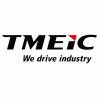
Asked in TMEIC

Q. What do you know about torrent power?
Torrent Power is an Indian power company that generates and distributes electricity.
Torrent Power is one of the leading power companies in India.
It generates and distributes electricity in various states of India.
The company has a strong presence in Gujarat, Maharashtra, and Uttar Pradesh.
Torrent Power has a total generation capacity of 3,879 MW.
It has won several awards for its performance and contribution to the power sector.

Asked in Subros

Q. What type maintenance. What preventive maintenance? Etc
Preventive maintenance involves regular inspections, adjustments, cleaning, and replacement of parts to prevent breakdowns and prolong equipment life.
Regularly inspecting equipment for signs of wear and tear
Performing routine cleaning and lubrication
Replacing worn out parts before they fail
Scheduling regular maintenance checks based on manufacturer recommendations
Keeping detailed records of maintenance activities
Implementing predictive maintenance techniques to anticipate iss...read more
Asked in Pyare Lal Sharma District Hospital

Q. What is your biggest weakness?
The weak point refers to a vulnerable or susceptible area or aspect.
A weak point can be a physical or mental limitation.
It can also refer to a flaw or vulnerability in a system or process.
Examples of weak points include a person's lack of confidence, a software bug, or a weak link in a chain.
Identifying and addressing weak points is important for improvement and problem-solving.

Asked in BHEL

Q. What are the different types of transformers?
Transfarma is not a known term. No answer available.
N/A
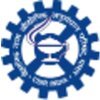

Q. What are the different types of brakes?
Brakes are devices that slow down or stop motion, crucial for vehicle safety and control.
Disc Brakes: Use a metal disc and caliper; common in cars and motorcycles.
Drum Brakes: Use a drum and brake shoes; often found in older vehicles.
Anti-lock Braking System (ABS): Prevents wheel lock-up during hard braking.
Regenerative Brakes: Convert kinetic energy into electrical energy; used in electric vehicles.
Air Brakes: Utilize compressed air; commonly used in large trucks and buses.

Asked in Cummins

Q. What is 5c of engine?
5c of engine refers to the five components that make up an engine's combustion process.
The five components are compression, combustion, cooling, control, and lubrication.
Compression refers to the process of compressing the air-fuel mixture before ignition.
Combustion is the process of burning the compressed air-fuel mixture to produce energy.
Cooling is necessary to prevent the engine from overheating during the combustion process.
Control refers to the various sensors and syste...read more
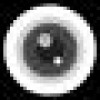
Asked in PICL

Q. What are the different types of mortar?
Mortar is a mixture of cement, sand, and water used to bind building blocks. There are different types of mortar based on their composition and application.
Types of mortar include cement mortar, lime mortar, and gypsum mortar
Cement mortar is commonly used for construction and is made of cement, sand, and water
Lime mortar is used for historic preservation and is made of lime, sand, and water
Gypsum mortar is used for plastering and is made of gypsum, sand, and water

Asked in Sunbeam Auto

Q. How many axes does a VMC machine have?
A VMC machine typically has 3 axis - X, Y, and Z.
Most VMC machines have 3 axis - X, Y, and Z for movement in three dimensions
Some advanced VMC machines may have additional axis for more complex operations
The number of axis in a VMC machine can vary based on the specific model and manufacturer
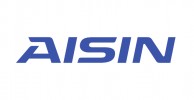
Asked in Aisin Automotive Haryana

Q. IC engine and it's classification
IC engine is an internal combustion engine that converts chemical energy into mechanical energy.
IC engine is classified based on the fuel used such as petrol engine, diesel engine, gas engine, etc.
It is also classified based on the number of strokes in a cycle such as two-stroke engine and four-stroke engine.
IC engines are further classified based on the arrangement of cylinders such as inline engine, V engine, flat engine, etc.
Examples of IC engines include car engines, moto...read more

Asked in Vikas Group

Q. What is a lathe?
A lathe is a machine tool used for shaping and machining various materials.
A lathe rotates a workpiece on its axis, allowing for cutting, drilling, sanding, and turning operations.
It consists of a bed, headstock, tailstock, and a tool post.
Common types of lathes include engine lathes, turret lathes, and CNC lathes.
Lathes are used in metalworking, woodworking, and glassworking industries.
Examples of lathe operations include turning a cylindrical shape, creating threads, and fa...read more

Asked in Escorts Kubota Limited

Q. How do you define quality?
Quality is a measure of excellence or superiority in a product, service, or process.
Quality refers to the degree to which something meets or exceeds expectations.
It involves characteristics such as reliability, durability, accuracy, and effectiveness.
Quality can be subjective and vary based on individual preferences and requirements.
Examples of quality include a well-built car that doesn't break down frequently, a delicious and consistent tasting food product, or a software t...read more
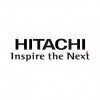
Asked in Hitachi

Q. What is a braking system?
A braking system is a mechanism that slows or stops the motion of a vehicle or machine.
Braking systems convert kinetic energy into heat energy to slow or stop a vehicle or machine.
There are several types of braking systems, including disc brakes, drum brakes, and regenerative brakes.
Disc brakes use calipers to squeeze brake pads against a rotor, while drum brakes use shoes that press against a rotating drum.
Regenerative brakes use the vehicle's momentum to generate electricit...read more
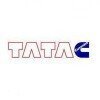
Asked in Tata Cummins

Q. Diesel engines and petrol engine of difference
Diesel engines use compression ignition, while petrol engines use spark ignition, leading to differences in efficiency and performance.
Diesel engines are generally more fuel-efficient than petrol engines due to higher compression ratios.
Petrol engines typically provide higher power output and quicker acceleration compared to diesel engines.
Diesel engines produce more torque at lower RPMs, making them suitable for heavy-duty applications like trucks.
Petrol engines are quieter ...read more

Asked in Tata Cummins

Q. Gas engine and diesel engines of difference
Gas engines use spark plugs for ignition, while diesel engines rely on compression for combustion, leading to efficiency differences.
Gas engines use spark ignition; diesel engines use compression ignition.
Diesel engines are generally more fuel-efficient than gas engines.
Gas engines typically produce more horsepower, while diesel engines excel in torque.
Examples: Gas engines are common in cars; diesel engines are often used in trucks and heavy machinery.
Asked in Erae Automotive India

Q. tell about this 5s,3r,4m
5s,3r,4m is a code used in lean manufacturing for workplace organization and efficiency.
5s stands for Sort, Set in Order, Shine, Standardize, and Sustain
3r stands for Remove, Replace, and Repair
4m stands for Man, Machine, Material, and Method
These codes are used to improve productivity, safety, and quality in the workplace
Asked in Erae Automotive India

Q. What is the GD&T symbol?
GD&T symbol stands for Geometric Dimensioning and Tolerancing symbol.
GD&T symbols are used to specify the geometric requirements of a part or assembly.
They include symbols for features such as flatness, perpendicularity, and concentricity.
GD&T symbols help ensure that parts are manufactured to the correct specifications and fit together properly.
Examples of GD&T symbols include the concentricity symbol (a circle within a circle) and the perpendicularity symbol (a square with ...read more

Asked in Escorts Kubota Limited

Q. Can you explain the different types of quality?
Quality refers to the standard or degree of excellence of something.
Quality is a measure of how well something meets its intended purpose or specifications.
There are different types of quality, such as product quality, service quality, and process quality.
Product quality refers to the characteristics and features of a product that determine its ability to satisfy customer needs.
Service quality refers to the level of customer service provided by a company or organization.
Proce...read more
Interview Experiences of Popular Companies








Reviews
Interviews
Salaries
Users


















